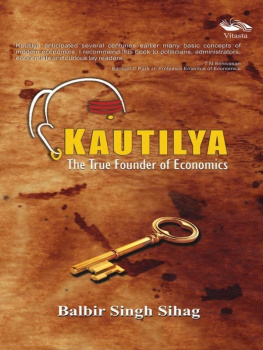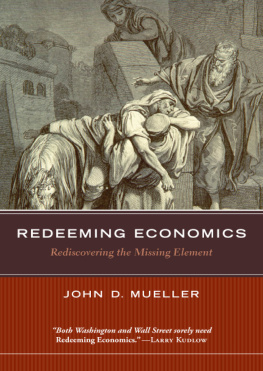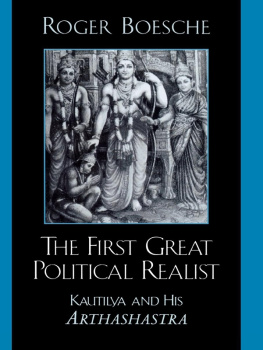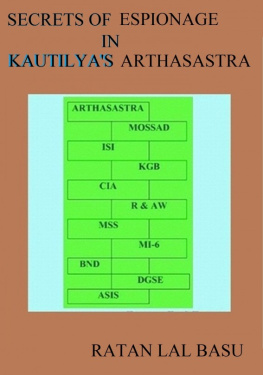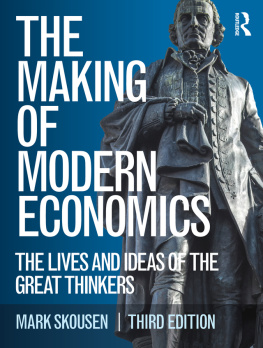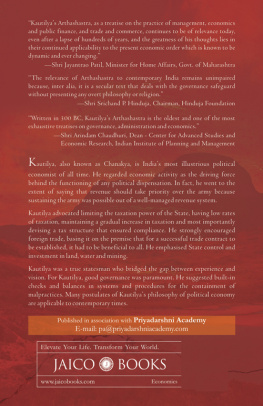Let Knowledge SpreadPublished by
Renu Kaul Verma
Vitasta Publishing Pvt Ltd2/15, Ansari Road, Daryaganj,New Delhi - 110 002
info@vitastapublishing.com
ISBN 978-81-925354-9-4 Balbir Singh Sihag, 2014
All Rights Reserved.
No part of this publication may be reproduced, stored in a retrieval system or transmitted in any form, or by any meanselectronic,mechanical, photocopying, recording or otherwisewithout the priorpermission of the author and the publisher. The views and opinions expressed in this book are the authors own.
Typeset and Cover Design by Vitasta Publishing Pvt LtdPrinted by Vikas Computer and Printers
To
My parents
Smt Nimbo Devi and Ch Munshi Ram Sihag,
Smt Prabhat Shobha Pandit and Prof Sher Singh who taught me the value of learning, hard work and honesty
Contents
ForewordxiiiPrefacexviiAcknowledgementsxxiii
ONE
Kautilya and His Times1.Prologue: Kautilyas Vision3-171.1 Provision of Human Security
1.2 Prevalent Views on Kautilyas Contributions1.3 Why Another Book on Kautilya?
2.Society, Polity and Economy 18-282.1 Changes in Writing Styles over Time
2.2 Socio-Religious-Political Conditions in
4th Century BCE
2.3 Economic Conditions, Markets andInstitutions in 4th Century BCE
TWO
Concepts, Methodology and Tools of Analysis
3.Origin, Scope and Methodology of Economics31-653.1Interpretation, Evaluation
and Accreditation of Earlier Works
3.2Requirements for Establishing
Origin of Economics
3.3 Views on the Wealth of Nations
3.4 Arthashastra on Definition
and Scope of Economics
3.5 Kautilyas Methodology:
A Partial Equilibrium Approach
3.6Optimization Subject to Constraints
3.7Time-preference and
Inter-temporal Arbitrage
3.8Arthashastra on Economics
as a Separate Discipline
4.A Forerunner of Neoclassical Price Theory66-854.1 Anticipation of Ordinal Preferences
4.2Cost, Production and
Substitution Possibilities
4.3 Demand-Supply Apparatus
5.Accounting Methods and Income Measurement86-965.1Accounting Methods
5.2Kautilya on the Scope and
Methodology of Accounting
5.3A Forerunner of National Income Accounts
THREE
Ethical Foundation to Freedom from Wants
6.Foundational Role of Dharma 99-1126.1Pre-Kautilyan Sages on
the Foundational Role of Dharma
6.2Kautilya Followed the Indian Thought
on the Role of Dharma
6.3Unique Contributions to
Action-oriented Approaches
7.Ethical, Efficient and
Energetic Decision-makers113-1237.1 Conceptual Framework on Ethical Conduct7.2 Character-building of the Future King
8.Ethics and Economic Growth124-1428.1Creation of Good Institutions
and Provision of Good Governance
8.2Capital, Labour and Land
as Sources of Economic Growth
8.3Institutions, Governance and
Risk-return Trade-off
8.4Interdependence of Knowledge, Governance,National Security and Economic Growth
9.Preventing Market and Government Failures143-1609.1Identification of Moral, Market
and Government Failures
9.2 Consequences of Market Failure
9.3 Consequences of Government Failure
9.4Rules, Regulations and
Organizational Design to Reduce Fraud
10.Information, Knowledge,
Wisdom and Management161-17310.1 Bounded Rationality
10.2 Wisdom-based Management
and Economic Performance
10.3 Trade-off between Pooling Knowledge
and Confidentiality
11.Labour Policy: Moral and
Material Incentives and Effort174-19511.1 Conceptual Framework on Incentives
11.2 Matching Incentive-Type to Agent-Type
11.3 Tailored Types of Material Incentives
to Agents Hierarchical Position
11.4 Payment System Design to
Alleviate Moral Hazard
12.Taxation: Principles and Policies196-21312.1 Origin of the Income Tax
and the Institution of Kingship
12.2Principles of Taxation
12.3 Anticipation of Dupuit-Laffer
Curve by Kautilya
12.4 Views on Other Related Concepts
13.Kautilya on Famine and Freedom214-22413.1 Kautilyas Conceptual Framework
for Prevention of Famines
13.2 Impact of Famines on Income and Freedom
14.International Trade Policies225-23214.1 Policies on Promotion of Imports
14.2 Nature of International
Trade in Ancient Times
14.3 Theory of Gains from Trade
FOUR
Ethics and Freedom from Fear of Crime
15.Administration of Justice235-24915.1 Corruption of Enforcers
and Crime Deterrence
15.2 Judicial Fairness and
Minimization of Legal Errors
15.3 The Optimum Level of Punishment
15.4 Other Related Issues
16.Contract and Property Laws250-26616.1 Contract Laws between Individuals &
Government and Individuals
16.2 Common Property and
Protection of Private Property Rights
17.Penance, Penalty and Prevention of Torts267-28817.1 Tort Laws before Kautilya
17.2 Kautilya Proposed Penance-Penalty
Mix for an Effective Deterrence
17.3 Kautilya on Negligence-based Tort Law
FIVE
National Security18.Defending Freedom by
Every Means and at Any Cost 291-30118.1 Kautilyas Ideas on
the Provision of Public Goods
18.2 Kautilya on Relative Power Equation
18.3 National Security and Kautilyas
Relative Asset Hypothesis
18.4 Kautilya on Invariance Hypothesis
18.5 Kautilyas Hypothesis:
Power Breeds More Power
19.Risk-return Analysis of Campaigns302-31119.1 Risk-return Trade-off in Making Alliances
19.2 Risk-return Trade-off in Acquiring Land
19.3 Risk Reduction through Diversification
19.4 Multi-Variable Approach
to Success of a Campaign
20.Time Inconsistency Problem
and Asymmetric Information312-32720.1 Kautilya on Time Inconsistency Problem
20.2 Kautilya on Asymmetric Information
20.3 Kautilya on Bargaining
with Private Information
21. Epilogue:
Kautilyas Place in Economic Thought328-33621.1 Recapitulation of Kautilyas Contributions
21.2 Kautilyas Noteworthy Insights
21.3 Giving Kautilya His Due Recognition as
the Founder of Economics
Endnotes337-396
References397-422
Index423-430
Foreword
The opus Arthasastra or the science of wealth or prosperity in Sanskritis attributed to Kautilya, also known as Chanakya and Vishnugupta. Not much is known about him except the legend that the Nandas, thenrulers of Pataliputra (modern Patna), insulted Kautilya who succeededin uprooting them and installing the Mauryas in their place. Though the date of the opus is not known precisely, it is generally agreed that Kautilya completed it in the 4th century BCE. It was widely known primarily by references of others to it, a complete text was found only in 1905 by R Shamasastry of the Government Oriental Library in Mysore who published its first English translation in 1915. Many translations in English and other languages have appeared since then.
Kautilya seems to have intended Arthasastra as a manual for the Mauryas on settling the land they acquired, building and administeringtheir state efficiently, maintaining law and order, accumulating and sustaining wealth and defending themselves against enemies within and outside their state. The strategic aspects of the advice to the ruler in it have naturally lead many to compare it to Machiavellis The Princeof vintage 1532 CE.
As its title suggests, the Arthasastra as a manual of statecraftnaturally had to deal with many economic matters such as raising revenue, paying civil servants, preventing corruption and many other issues. To be able to provide sensible advice on such matters, its authorhad to have an implicit or explicit economic theory as well as for law and economics. Professor Balbir Sihag, a PhD in economics from MIT, learnt his economic theory from giants like Paul Samuelson. Hehas chosen to examine the

